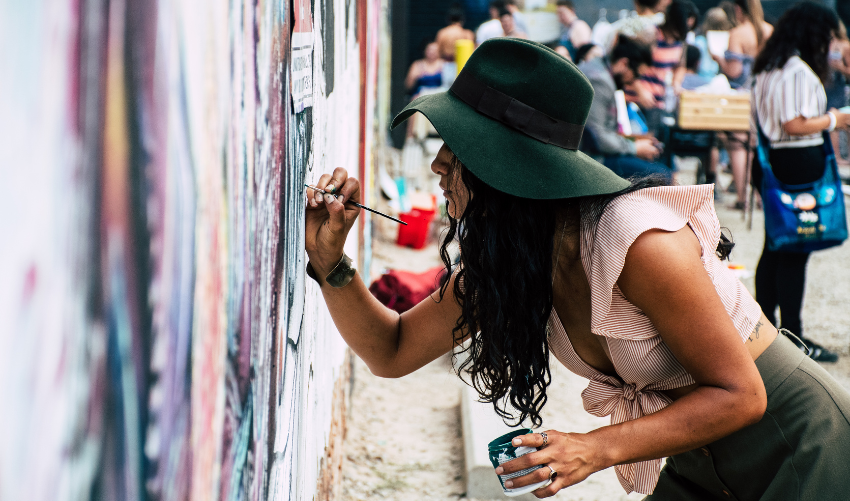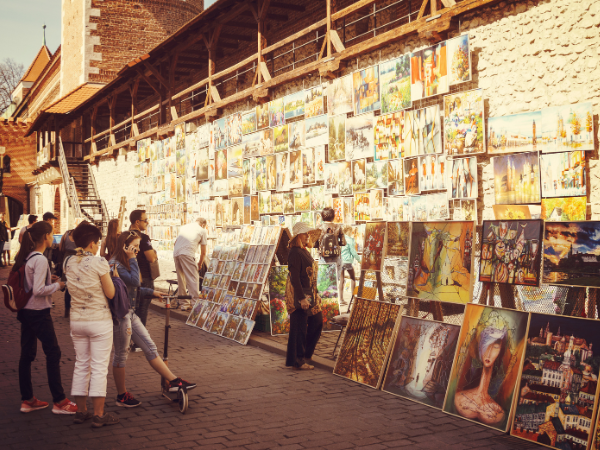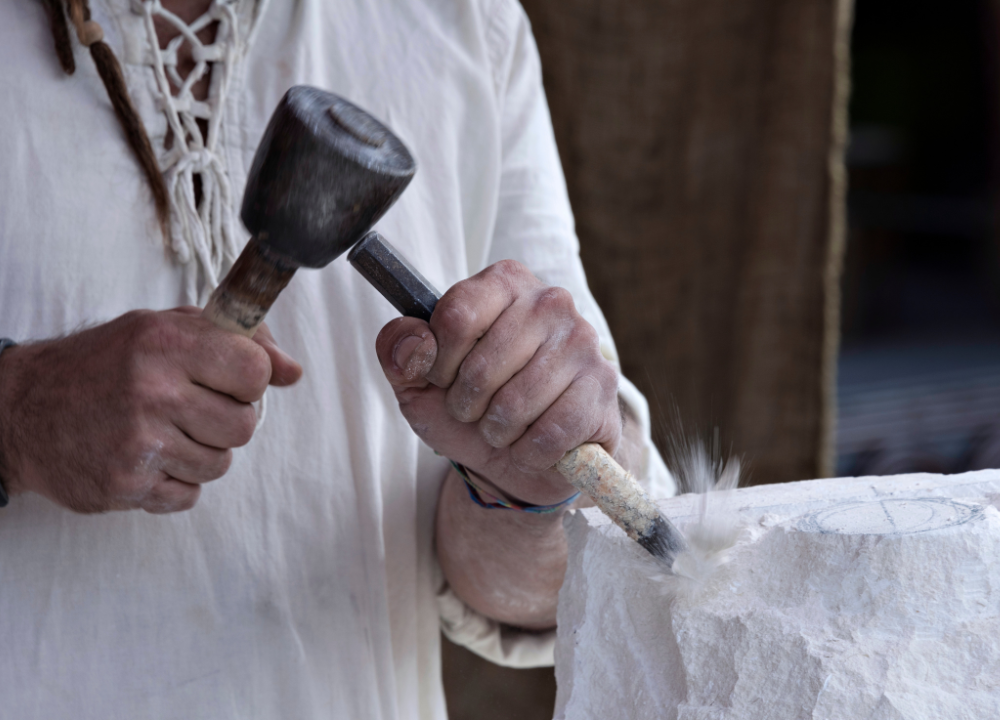Street art has come a long way from the gritty walls of urban landscapes to the polished floors of gallery spaces. If you’ve ever walked past a vibrant mural or stumbled upon a thought-provoking stencil, you know the power of this art form.
Join us as we explore the fascinating journey of street art from the streets to the galleries. You might just find that this evolution mirrors changes in society, culture, and even your own perceptions of art.
Origins Of Street Art
The Evolution of Street Art in Gallery Spaces shows how art moves from the streets to formal settings. Street art began as a way for artists to express their thoughts. It started in urban areas, capturing the attention of the public and the art world alike. This section explores the origins of street art and how it transformed over the years.
Early Beginnings
Street art traces its roots back to the late 1960s and early 1970s. Artists used walls and public spaces to share their messages. Key features of early street art include:
- Graffiti tags
- Mural paintings
- Posters and stickers
These forms of art allowed people to communicate without permission. Artists wanted to be seen and heard.
Influences From Graffiti Culture
Graffiti culture played a significant role in shaping street art. It originated in New York City. Young artists used spray paint to create their names on walls. This practice spread to other cities. Artists began to develop unique styles and messages.
Key elements of graffiti culture include:
- Tagging: Writing a name or signature.
- Bombing: Quickly painting in a public space.
- Pieces: Larger, more complex artworks.
Political And Social Statements
Street art became a voice for social change. Artists addressed issues like poverty, war, and inequality. They used bold colors and strong imagery. This art form reached a wider audience. It sparked conversations and raised awareness.
Notable artists like Banksy and Shepard Fairey emerged during this time. Their works challenged society’s norms.
From Streets To Galleries
As street art gained popularity, it moved into galleries. This shift changed how people viewed it. Street art began to be seen as legitimate art. Galleries provided a platform for artists to showcase their work.
Today, street art is celebrated in many forms:
- Exhibitions
- Festivals
- Art fairs
These events help bridge the gap between street and gallery art.

Transition To Galleries
Artists once limited to walls and streets now find homes in galleries. This transition changes how people view and appreciate street art. It brings attention to the talent of these artists, allowing for greater exposure and recognition.
Changing Perceptions
The transition to galleries has altered how people perceive street art. What was once seen as vandalism is now viewed as a legitimate art form. Galleries provide a space where:
- Artists can showcase their work professionally.
- Viewers can appreciate the craft and effort involved.
- Street art can be sold and valued like traditional art.
Increased Accessibility
Galleries make street art more accessible to the public. Many people may not visit urban areas where street art thrives. By bringing this art into galleries, more audiences can experience it. This accessibility helps:
- Expand the audience for street artists.
- Increase sales and opportunities for artists.
- Promote a greater understanding of street art culture.
Collaboration With Traditional Artists
The move to galleries has fostered collaboration. Street artists often work alongside traditional artists. This blend creates unique exhibitions that attract diverse crowds. Some benefits of these collaborations include:
| Benefit | Description |
|---|---|
| Creative Fusion | Merging styles leads to innovative art pieces. |
| Broader Reach | Combining audiences from both art worlds. |
| Increased Credibility | Street art gains respect within the fine art community. |
Changing Exhibition Formats
Galleries have adapted their formats to showcase street art effectively. They often create immersive experiences. These formats include:
- Interactive installations.
- Live painting events.
- Multimedia presentations.
This approach engages visitors in new ways. It transforms how street art is experienced and understood.
Key Artists And Movements
Key artists and movements helped make this shift. They challenged ideas and brought street art into the spotlight. This section looks at famous pioneers and contemporary influences that shaped this art form.
Famous Pioneers
Many artists laid the groundwork for street art in galleries. Their unique styles and messages changed how people view this art. Here are some important pioneers:
- Jean-Michel Basquiat: His graffiti combined words and images. He highlighted social issues.
- Keith Haring: Known for bright colors and simple shapes. His art often carried strong messages about life and love.
- Banksy: This anonymous artist uses stencils for powerful political commentary. His work often appears suddenly in urban spaces.
- Shepard Fairey: Creator of the iconic “Hope” poster. He blends street art with graphic design.
These artists took street art from the streets to galleries. They gained recognition and respect. Their work sparked interest in other artists.
Here is a table showing key contributions of these pioneers:
| Artist | Style | Main Theme |
|---|---|---|
| Jean-Michel Basquiat | Graffiti | Social issues |
| Keith Haring | Pop art | Life and love |
| Banksy | Stencil | Political commentary |
| Shepard Fairey | Graphic design | Social change |
Contemporary Influences
Today, street art continues to evolve. Many contemporary artists are making their mark. They blend street art styles with traditional gallery art. This mix draws new audiences and keeps the art fresh.
- JR: Known for large-scale photo installations. He focuses on social issues and communities.
- Faith47: A South African artist. She uses her work to address themes of humanity.
- Os Gêmeos: Twin brothers from Brazil. Their colorful murals often tell stories of their culture.
- Invader: Famous for his tile mosaics inspired by video games. He brings a playful element to urban spaces.
These artists show how street art can fit into galleries. Their work captures modern themes and challenges viewers. New movements continue to emerge, reflecting societal changes and cultural shifts.
Street art is no longer just about graffiti. It has become a powerful voice in the art world. Key artists and movements shape its future.
Cultural Impact
Street art once thrived on city walls, expressing raw emotions and social issues. Now, it finds a home in galleries, bridging the gap between public art and fine art. This shift carries a significant cultural impact. It reshapes how we view urban expression and engages broader audiences.
Social Commentary
Street art often acts as a voice for the unheard. It comments on social issues and sparks conversations. Artists use their work to address topics like inequality, politics, and identity. This form of art reflects the struggles and triumphs of everyday life.
Key points about social commentary in street art:
- Challenges societal norms.
- Raises awareness of local and global issues.
- Encourages dialogue among diverse groups.
Many street artists create pieces that focus on specific themes. Here are some common themes:
| Theme | Description |
|---|---|
| Racial Equality | Art highlighting issues of race and justice. |
| Environmental Awareness | Pieces promoting sustainability and nature conservation. |
| Political Statements | Art reflecting political views and activism. |
These themes resonate with viewers. They encourage reflection and understanding. Street art in galleries enhances this impact, reaching an audience that may not explore public spaces.
Community Engagement
Street art fosters strong connections within communities. It encourages collaboration among artists, residents, and local organizations. This engagement creates a sense of belonging and pride.
Community art projects often involve:
- Workshops for local artists.
- Public events showcasing artwork.
- Collaborative mural projects.
Galleries play a crucial role in promoting community engagement. They host events that bring people together. These events often include:
- Artist talks and panels.
- Interactive art sessions.
- Community exhibitions.
Street art in gallery spaces serves as a bridge. It connects artists with their communities. This connection strengthens cultural identity and inspires future generations.
Gallery Exhibitions
Gallery exhibitions have played a key role in this change. They allow street artists to showcase their work in formal settings. This shift helps bring new audiences to street art. It also gives artists a chance to share their stories and ideas.
Notable Shows
Several exhibitions have highlighted the significance of street art in gallery settings. These shows bring together different styles and artists. They create conversations about art in public spaces. Here are some notable exhibitions:
- Street Art: Contemporary Works – This exhibit focused on the evolution of street art. It featured both established and emerging artists.
- The Rise of Urban Art – This show highlighted how street art influences mainstream culture.
- Graffiti and Beyond – This exhibition showcased the diverse techniques within street art, from stencils to murals.
Many galleries also host annual street art festivals. These events attract numerous visitors and promote community engagement. Below is a table of some key exhibitions:
| Exhibition Name | Location | Year |
|---|---|---|
| Street Art: Contemporary Works | New York City | 2019 |
| The Rise of Urban Art | Los Angeles | 2021 |
| Graffiti and Beyond | London | 2020 |
These exhibitions not only highlight street art but also encourage new conversations. They challenge traditional views of art and its place in society.
Curatorial Approaches
Curators play a vital role in how street art is presented in galleries. Their choices shape the audience’s experience. They decide which artists to showcase and how to display their work. Curators often focus on themes that resonate with current issues. This helps connect the audience with the art on a deeper level.
- Contextualization: Curators provide background on the artists and their work. This helps viewers understand the messages behind the art.
- Interactive Spaces: Some exhibitions create interactive areas. Visitors can engage with the art, making the experience memorable.
- Thematic Grouping: Curators often group artworks by theme. This allows for a more cohesive viewing experience.
New approaches are emerging. Many curators invite street artists to create site-specific installations. This brings the raw energy of street art into the gallery. It creates a dialogue between the street and the gallery.




